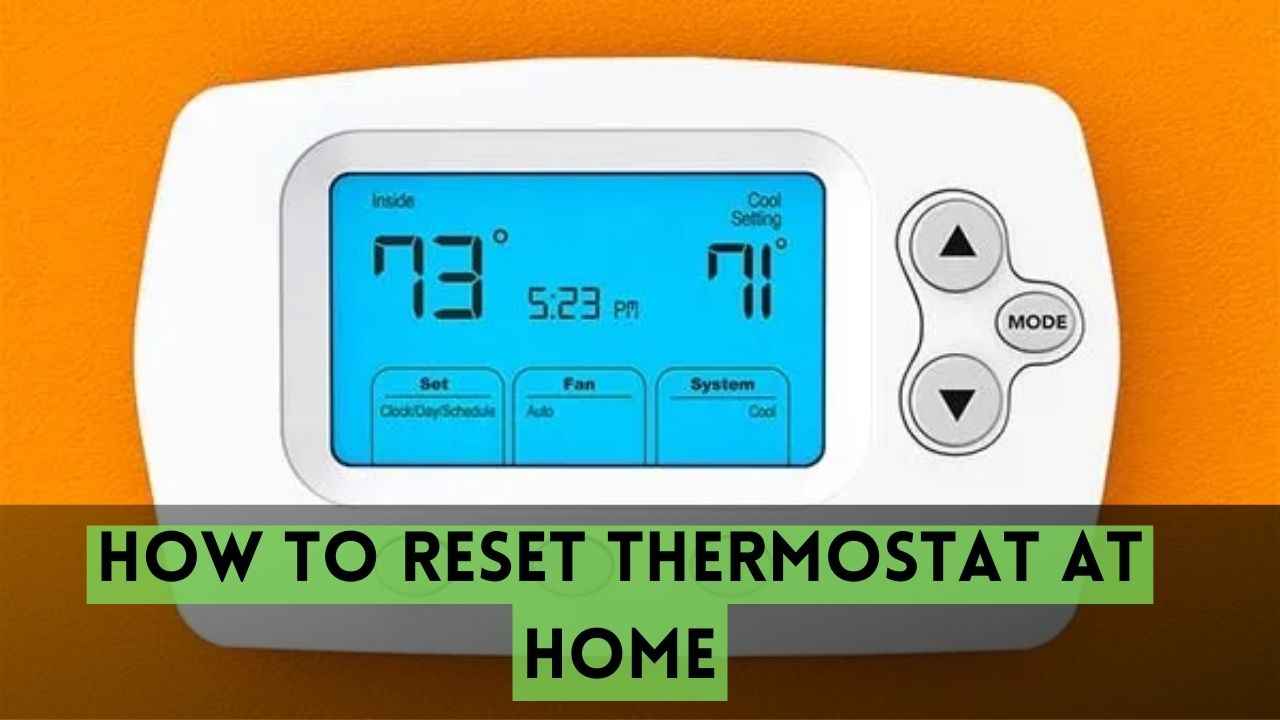Last updated on May 15th, 2024 at 06:03 pm
If you’re experiencing issues with your HVAC system or your thermostat, it may be necessary to reset it to its default settings. Resetting your thermostat can help resolve a variety of problems, from incorrect temperature readings to connectivity issues.
In this article, we’ll guide you through the process of resetting your thermostat, step-by-step.
Table of contents
Why Reset Your Thermostat?
Before we dive into the details of resetting your thermostat, it’s important to understand why it might be necessary in the first place. Here are some common reasons why you might need to reset your thermostat:
Incorrect Temperature Readings
If your thermostat is displaying the wrong temperature, it may be due to a programming error or a glitch in the system. Resetting the thermostat can help restore accurate temperature readings.
Connectivity Issues
If your thermostat is not connecting to your HVAC system or your Wi-Fi network, a reset may be necessary to re-establish the connection.
Malfunctioning Controls
If your thermostat’s controls are not responding properly or are behaving erratically, a reset may help resolve the issue.
How to Reset Your Thermostat
Now that we’ve covered some of the reasons why you might need to reset your thermostat, let’s get into the nitty-gritty of how to do it. Here are the steps to follow:
Step 1: Turn Off Power
Before you start working on your thermostat, it’s important to turn off the power to your HVAC system. This can typically be done by switching off the circuit breaker or removing the fuse that powers the system.
Step 2: Remove the Thermostat Cover
Once the power is off, you can remove the cover of your thermostat to access the inner workings. Depending on the model of your thermostat, you may need to unscrew the cover or simply snap it off.
Step 3: Locate the Reset Button
Most thermostats have a reset button that is clearly labeled. Look for a small button labeled “reset” or “restart” on the circuit board inside the thermostat.
Step 4: Press the Reset Button
Using a small tool such as a paperclip or a toothpick, press and hold the reset button for 5-10 seconds. You should feel a slight click as you press the button.
Step 5: Replace the Thermostat Cover
Once you’ve reset your thermostat, replace the cover and turn the power back on to your HVAC system. Your thermostat should now be reset to its default settings.

Tips for Resetting Your Thermostat
While the process of resetting your thermostat is fairly straightforward, there are a few tips to keep in mind to ensure a successful reset:
Consult Your User Manual
Before attempting to reset your thermostat, consult the user manual for your specific model. The manual may have specific instructions or warnings that are important to follow.
Use a Soft Tool
When pressing the reset button, use a soft tool such as a toothpick or paperclip to avoid damaging the circuit board inside the thermostat.
Be Patient
After resetting your thermostat, it may take a few minutes for it to reboot and reconnect to your HVAC system or Wi-Fi network. Be patient and give it time to complete the process.
Resetting a Thermostat Without a Reset Button
If your thermostat does not have a reset button, you can still reset it by following these steps:
- Turn off the power supply: Locate the circuit breaker or fuse that controls the power supply to your thermostat and turn it off.
- Remove the thermostat cover: Most thermostats have a cover that can be removed to access the wiring. Use a screwdriver to remove the cover carefully.
- Label the wires: Take a photo of the wiring or write down which wires are connected to which terminals on the thermostat. This will make it easier to reconnect them later.
- Disconnect the wires: Carefully remove the wires from the terminals by gently pulling on them. Be careful not to damage the wires or the terminals.
- Wait for a few minutes: Leave the thermostat wires disconnected and wait for a few minutes to allow the system to reset.
- Reconnect the wires: Reconnect the wires to the terminals, following the labels or photos you took earlier.
- Replace the thermostat cover: Carefully replace the cover and secure it with the screws.
- Turn on the power supply: Go back to the circuit breaker or fuse and turn the power supply back on.
Your thermostat should now be reset and ready to use. If you are still experiencing issues with your thermostat, it may be time to consult a professional HVAC technician.
FAQs
How often should I reset my thermostat?
You only need to reset your thermostat when you’re experiencing issues with it. Otherwise, there’s no need to reset it.
Will resetting my thermostat delete my programming settings?
Yes, resetting your thermostat will restore
Can a thermostat just stopped working?
Yes, a thermostat can stop working due to a range of issues, including dead batteries, faulty wiring, or internal malfunctions.
Also Read: Why Thermostat is not Turning on the Heat?
Conclusion
Resetting your thermostat is a simple and effective way to address a variety of issues that may arise with your HVAC system or thermostat. Whether you’re experiencing incorrect temperature readings, connectivity problems, or malfunctioning controls, a reset can help restore your thermostat to its default settings and resolve the issue at hand.
It’s important to follow the steps carefully and use caution when accessing the circuit board inside your thermostat. Always consult the user manual for your specific model, and use a soft tool to press the reset button to avoid damaging the circuit board.
Remember to be patient after resetting your thermostat, as it may take a few minutes for it to reboot and reconnect to your system. With these tips in mind, you can reset your thermostat confidently and get your HVAC system back up and running smoothly.